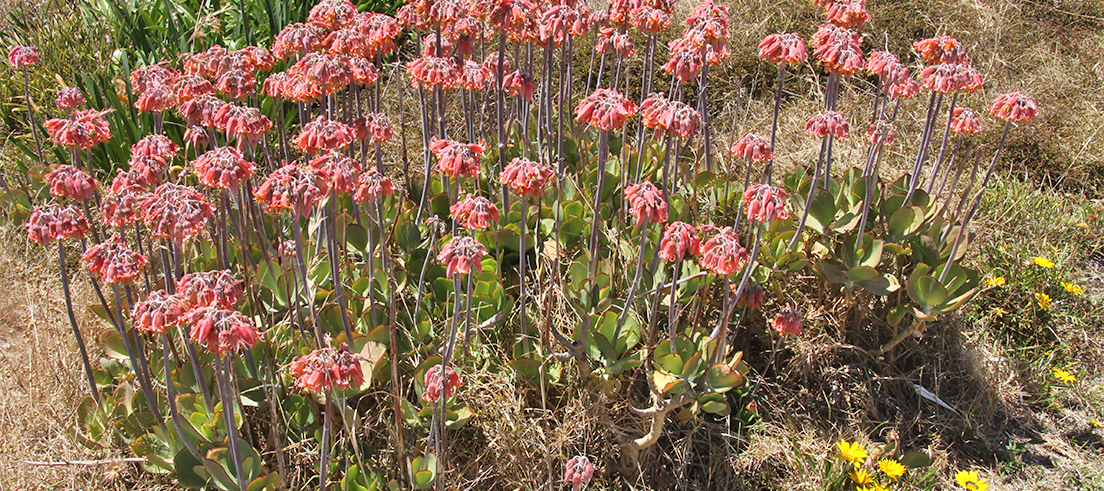
Addressing community concerns over invasive toxic pig's ear plant
Following a successful community meeting on the spread of the toxic pig’s ear plant in Pigeon Bay, we are, on behalf of the pig’s ear working group, calling for Banks Peninsula landowners to report sightings of the plant.
Having a better understanding of the distribution and extent of the problem will enable decisions to be made on the best approach to reducing the impact and spread of the plant.
That could be through tactics such as:
- community education and awareness raising;
- community days;
- and other resources to empower community action until a decision can be made about the plant’s formal inclusion into biosecurity plans.
Why is pig's ear a pest?
The succulent can grow up to a metre in height. Its flowers are bell-shaped and can be orange, red or pink, and its seeds are dispersed by wind, stock and gravity.
Pig’s ear is toxic to livestock if ingested and displaces native coastal vegetation and at rocky outcrops where rare native species occur. It can form dense clumps in coastal cliff ecosystems, making it difficult to remove once established.
Find out more about pig's ear, how to identify it and manage this pest on your land.
Controlling pig's ear
Pig’s ear can be controlled manually in sensitive biodiversity areas, by digging out and disposing of all parts of the plant.
All parts of the plant must be removed, as small amounts left behind can regrow.
Spraying herbicide for larger infestations in pasture is also an option.
Community’s concerns about pig’s ear
Principal biosecurity advisor Laurence Smith said pig’s ear was becoming a concerning plant for residents who have noticed the numbers growing over recent years.
"We’re hearing the community’s concerns about pig’s ear impacting on production values and native ecosystems and we’re acting accordingly. In conjunction with the pig’s ear working group, which was born out of the community meeting, we want to investigate exactly what, if anything can be done to combat the spread of pig’s ear," Laurence said.
"This is why we are asking the community for its help in reporting incidences of pig’s ear that we may not know about. Even if it is just one or two plants, or the plant has been growing on your property for years, we want to hear about it," he said.
Report a pig's ear sighting
If you think you have seen pig’s ear, you can report a sighting.
A photo of the plant would be helpful to ensure it is a pig’s ear plant, Laurence said.
"Your property won’t be visited and there is no compulsion to do any control work. We are only trying to build a picture of how widespread the plant is, so the community can decide on what could be done to control it in future," he said.
If you have a question or want more information on pig’s ear, you can email biosecurity@ecan.govt.nz with your question, and our specialist team will get back to you.
